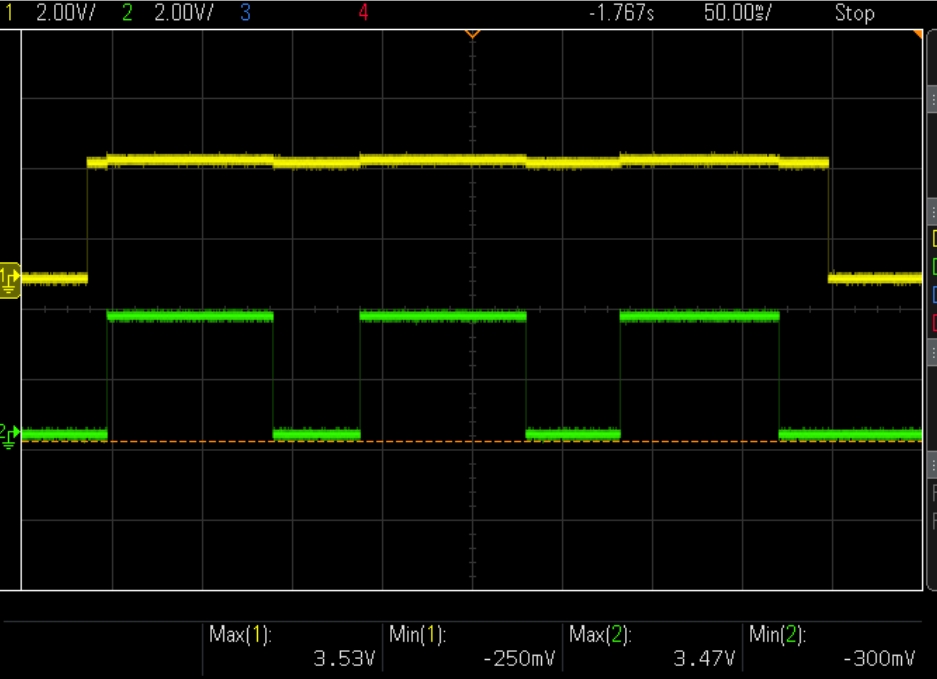I have a circuit in that GPIO_1 (yellow trace) is generating repeating signals to control an NMOS and GPIO_2 (green trace) is controlling an LED driver (buck DC/DC) load via an NMOS switch.
When a occasion that if GPIO_1 is pull-high (or low) at the same time when GPIO_2 is outputting signal, GPIO_1's voltage will slightly increase by 500 mV or so and then drops back when GPIO_2 is not output signal.
Both the load and the MCU are supplied by the same power source though. But I do realize that the 3V3 LDO (supplies the MCU) is also having the same behavior as well. What is happening here?

